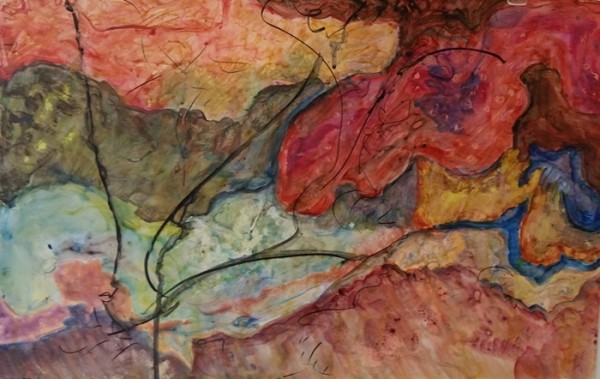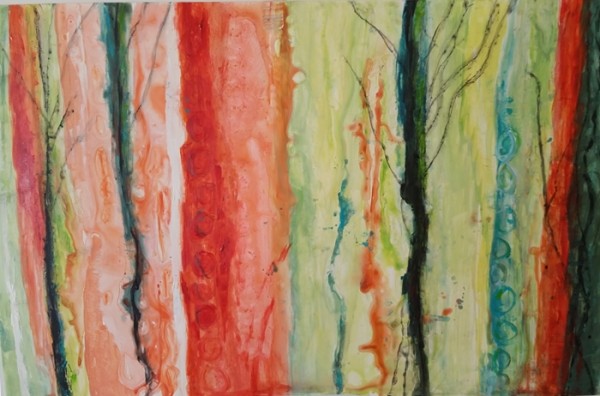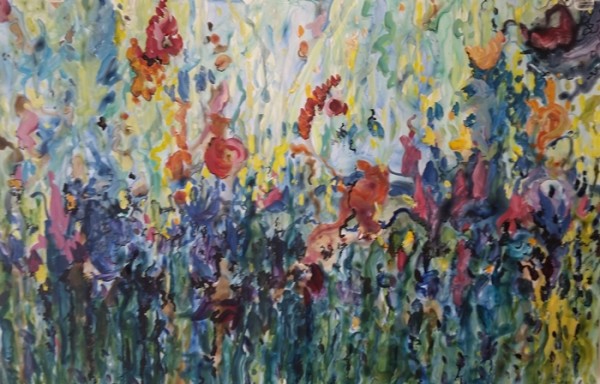Winter is almost over and here in New Mexico, trees and plants are starting to pop with color. Instead of browns and greys in the landscape I am starting to see a few patches of green, orange and even yellow all over the scenery.
Here is another painting that I just completed using a rather limited palette of raw sienna, cobalt blue and red oxide. This combination allowed me to mix interesting pinks, greens and oranges. Once again I have painted a high horizon line. I am still somewhat preoccupied with the horizon line.
Horizon Line
The horizon line is thought to be one of the foremost visual components or clues of perspective in a landscape. It’s the thing we immediately use to interpret the perspective in a painting we are viewing. We do it almost instinctively.
So if the horizon line is too high or low in a painting we lose the brain’s ability to interpret and perceive perspective. Instead, the viewer has to first struggle to deal with where the horizon line is, to see it for what it is and put it in relation with everything else in the composition.
Too high a horizon line, with only a tiny sliver above it and the brain won’t instantly register that area as sky. If it is too low, the sliver below the horizon risks not being perceived as land.
In most cases, a low horizon line works for emphasis on the sky. A high horizon line emphasizes the landscape.
In any case, I hope to be able to abstract the horizon line more in the future.








